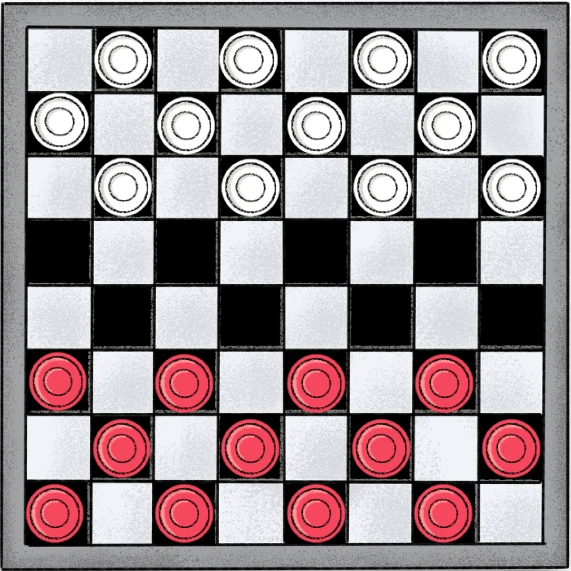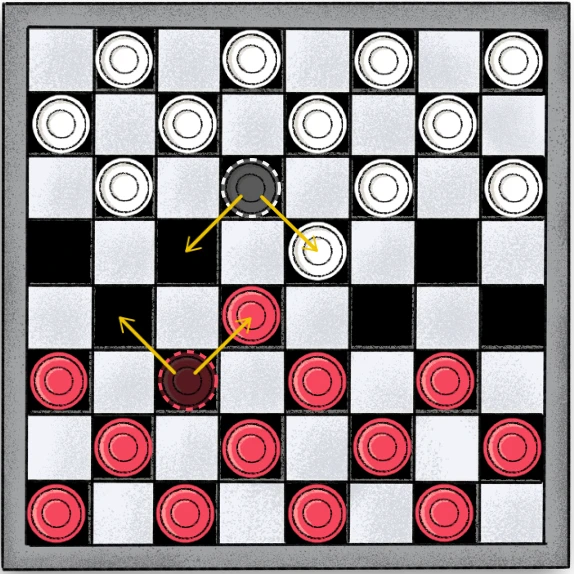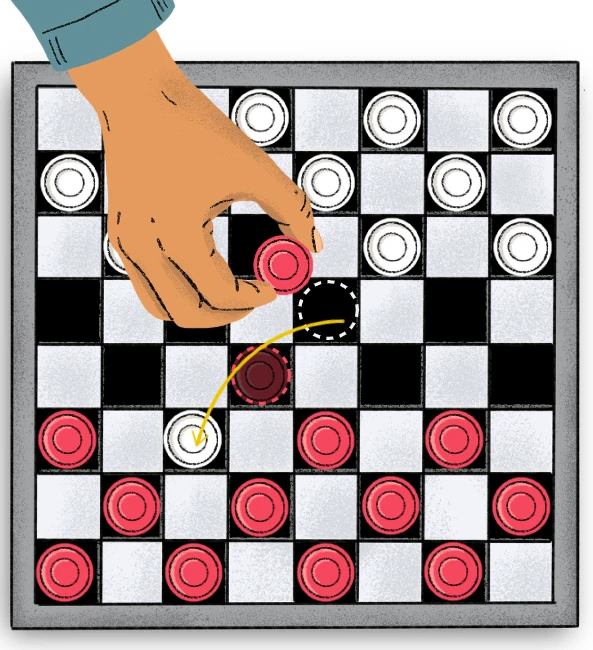

4/1/2025
How to Play Checkers: A Beginner's Guide to Mastering Strategy and Fun
Checkers is a classic board game of strategy and tactics that's easy to learn yet challenging to master. It involves two players, a standard 8x8 board, and 12 pieces per player. Whether you're a beginner or looking to sharpen your skills, here’s a simplified breakdown of the rules and gameplay.

Getting Started:
1. Arrange the board with alternating dark and light squares; only the dark squares are used for play.
2. Each player starts with 12 pieces placed on the dark squares closest to them. Pieces should fill the first three rows on each side of the board.

Basic Rules:
• Pieces are always set on dark squares
• Players take turns moving their pieces diagonally on dark squares.
• Regular pieces can only move forward until they're "kinged."
• To capture an opponent's piece, jump over it diagonally. Captures are mandatory when possible.

• Double jumps are possible to take multiple pieces

• A piece becomes a king by reaching the opponent's side of the board, allowing it to move both forward and backward.
Winning the Game:
• The game ends when a player captures all their opponent's pieces or traps them so they can't move.
Best Opening Moves in Checkers and Strategic Tips
The “Old Faithful” opening move is widely regarded as one of the best and most popular opening plays in checkers. This move involves shifting the black checker from square 11 to square 15, diagonally forward to the right. For the second player (commonly playing white or red), an effective opening move is to advance from square 23 to square 18, moving diagonally forward to the right.
Additionally, the 22-17 opening move is a common counter to the 11-15 play, offering an alternative strategic approach.
Top Strategies to Excel in Checkers
1. Guard Your Back Row: Retain your checkers on the last row for as long as possible. This prevents your opponent from turning their pieces into kings, which grants them superior mobility.
2. Sacrifice Wisely: Occasionally sacrificing a checker can provide opportunities to capture multiple opponent pieces. Prioritize long-term strategy over short-term defense.
3. Control the Center: Occupying central positions helps keep your checkers together and blocks your opponent's path to your back row. Avoid the edges as they can make your pieces vulnerable.
4. Move in Pairs: There’s safety in numbers. Maneuvering your checkers in pairs reduces the likelihood of them being isolated and jumped by your opponent.
5. Win by Blocking: Capturing all your opponent's checkers isn’t the only route to victory. You can also secure a win by trapping their non-king pieces so they can’t move, especially when cornered.
Mastering these techniques will sharpen your gameplay and give you an edge in checkers! Let me know if you'd like help understanding any specific strategies further.

